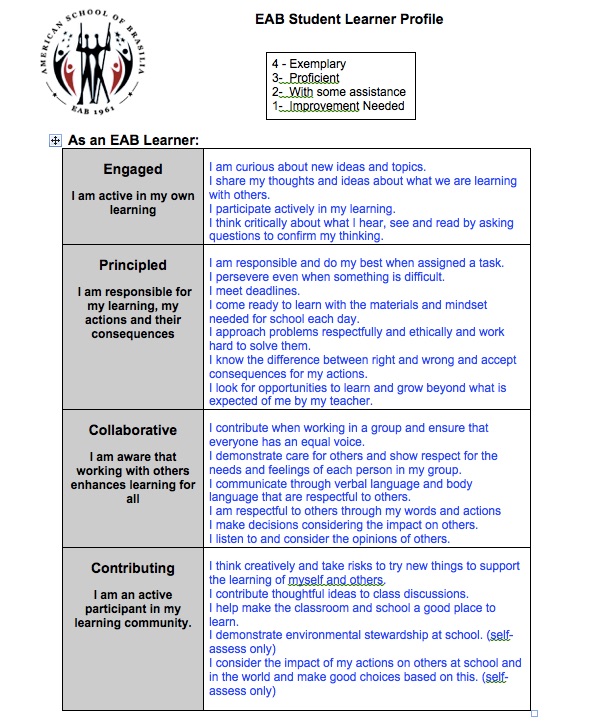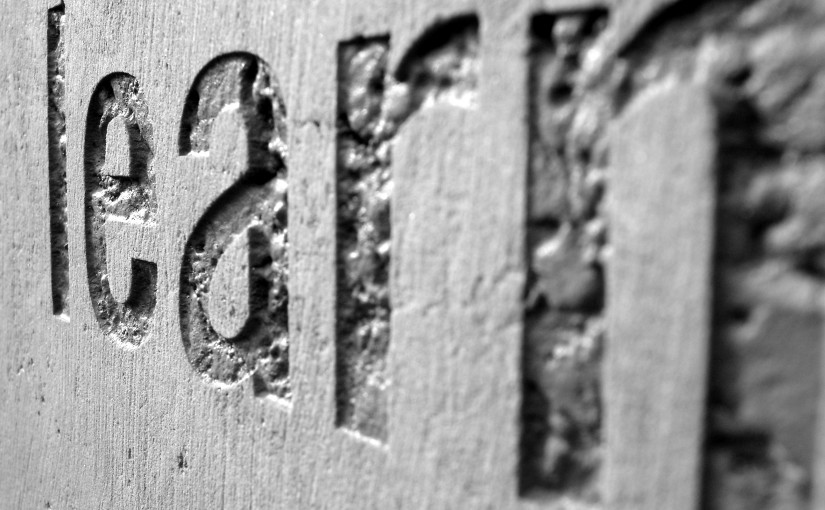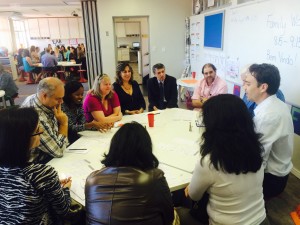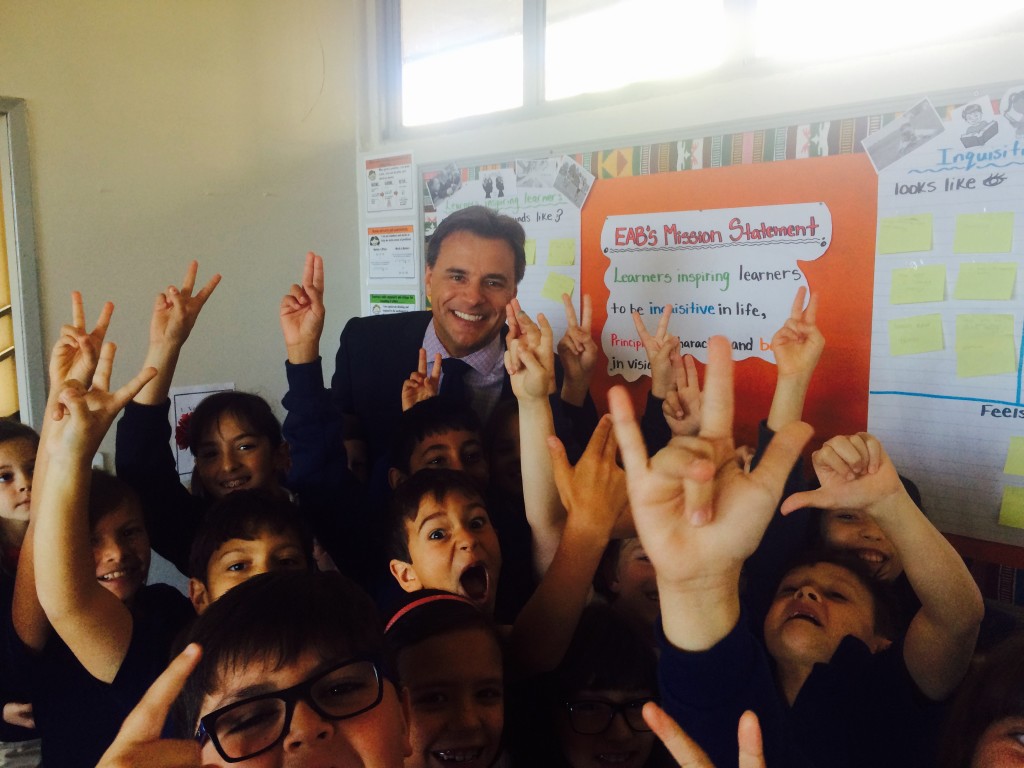Kristie Da-Ngoc Nguyen, a friend and former colleague at the American School of Brasilia, published her deeply profound and moving personal story in the most recent edition of The International Educator (TIE) newspaper. Kristie’s article is shared below, with permission.
Envisioning a True Leader
By Kristie Da-Ngoc Nguyen
01/13/2016
“Together we inspire a love of learning, empowering all students with the courage, confidence, creativity, and compassion to make their unique contribution in a diverse and dynamic world.”
Twenty years ago, Ms. Sriram had the opportunity to be in the audience at one of the Former President’s talks. He asked all those in the audience to close their eyes and envision a great leader. Our school board chairperson repeated this challenge, asking all of us to do the same, calling up the image of someone who had inspired us. A vision of my father, Binh Van Nguyen, in his crisp white shirt and tie appeared in my mind. A man who embodied courage, confidence, creativity, and compassion. A man who has been a force throughout my life. A man who made me who I am today. Here is the story of my father.
In 1975, after the Fall of Saigon, my father was arrested and put in a re-education camp. His crime was working for the former government’s telecommunication office. Fortunately for us, my maternal grandfather had some connections from his resistance days fighting against the French regime. With what money he could gather, he paid a bribe to free my father from his incarceration. With a mark on his file, my father was unable to find a job. My grandfather gave my dad a job on his fishing boat. Though he had never done a day of hard labor in his life, my father happily accepted it.
Without any complaints, he embraced his new life as a fisherman. He learned as much as he could about the work and always found joy in everything. Every time he came home from a fishing trip, he taught my siblings and me the names of all the new sea creatures he had harvested. We learned which ones to stay away from and which tasted good. He made it so fun that we always looked forward to his return home.
By 1978, life had become unstable in Vietnam and my parents did not know what kind of future we would have there. They ultimately decided our family should flee the country. For their children’s future, my parents would say goodbye to everything and everyone in Vietnam and bring us to a new land of hope.
The plan to escape was simple: my father would go on one of his fishing trips and pass the checkpoint, then wait for us on shore. We would take a smaller boat through the jungle to get out to the coast without going through the checkpoint. A few mementos were packed and hidden on the boat. Everyone was set and ready to leave the country.
As dusk arrived, we boarded the small boat to head through the winding, narrow river in the dense jungle. We prayed that we wouldn’t get caught. Our hearts were thumping in our chests as we paddled further and further away from our home. We met with a few mishaps—the boat got stuck in the mud, and we met a few people that wanted to know where we were going—but we managed to reach the coast. The sea breeze blew away some of our worries as our destination came into view. A light flashed from afar, a signal from the boat that would carry us away. Unfortunately, the wind blew harder and harder, and the rain began to pour down on us.
Then suddenly, a dreadful storm came up and capsized our boat. We were thrown into the water, fighting for our lives. After what seemed like an eternity struggling against the relentless storm and the merciless waves, we were rescued by another fishing boat. Soon, we discovered that my mother, my five-year–old sister, and about seven other members were missing. A few people jumped in the water to search for them, but found no one. We were urged by the kind fisherman that rescued us to go, because they didn’t want to get caught.
When we arrived at my father’s boat he was informed of the news. My father broke down and cried. He wanted to go back and find my mother and sister, but time wasn’t on our side. Other members of the group pleaded that we had to leave immediately, before the authorities discovered our escape. They begged him to think about his other children: if we were caught, our future would forever be sealed. For his four other children’s future, my father sadly steered the boat to freedom. It must have been one of the hardest decisions he had to make in his life.
We arrived in Malaysia and were taken to a refugee camp in Kota Bharu. Life was hard, but it was not too bad. We were given sardines, eggs, and rice to eat. We didn’t have much, but we had each other. After five months in the refugee camp, we were sent to Des Moines, Iowa with some second-hand clothes and an album of valuable pictures in a rice sack. After a few months on welfare, and a few English lessons, my father went out to look for a job. He found a work as a custodian in a hospital. A man with a college degree, used to wearing a tie to work, now had to clean the floor and toilets. But he proudly went to work every day, and continued to go to school at night.
Wonderful dad that he was, he didn’t grumble when he came home at the end of a hard day. He always brought little treats from the hospital for us: discarded magazines and uneaten packages of jam or Jell-o were presents we always looked forward to. After eating a quick dinner, he would load the four of us and some of his classmates into his used station wagon to go to his night school. While he was in class, my siblings and I entertained each other by running down the hallways and peeking into other classrooms. It sure beat doing homework at night. After a few years of working and going to school, my dad earned an Associate degree from the community college. He quit his job as a custodian and found a better one working in the printing department of a newspaper. He died a few years later of a brain tumor, but not before seeing all of his children as college graduates working happily in their chosen fields.
This is a story about my father, a man who embodied courage, confidence, compassion, and creativity. A man who, despite starting his life in America with nothing but an empty hand, was able to bring up four wonderful children all by himself.
My wish for all us as educators is that many years from now, when kids close their eyes and think of who inspired them as a leader, that each of our images will come to the mind of at least one child.
Kristie Da-Ngoc Nguyen is a third-grade teacher at the American International School Chennai.
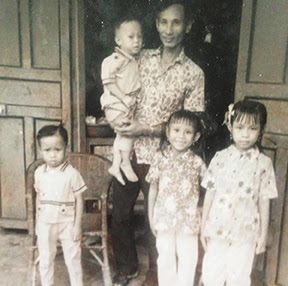


 ksgiving lunch that was highlighted by the large number of parents who joined their children to share a special moment together. Families were also invited to bring desserts to support the event. Given the strong sense of community at EAB, no one should have been surprised at how many tables were filled with desserts provided by our families. Thank you, once again, for making the event such a success.
ksgiving lunch that was highlighted by the large number of parents who joined their children to share a special moment together. Families were also invited to bring desserts to support the event. Given the strong sense of community at EAB, no one should have been surprised at how many tables were filled with desserts provided by our families. Thank you, once again, for making the event such a success.




